Below is the transcribed version of the video:
The T-Rex thunders after you. You turn, point your M-16 at the beast and fire! Reality snaps back hard and your bullet turns into a tooth-tipped arrow. The T-Rex smiles. You smile. The game just leveled. What? This is Torg Eternity. Here is why this should be on your RPG shelf or perhaps why it shouldn’t!
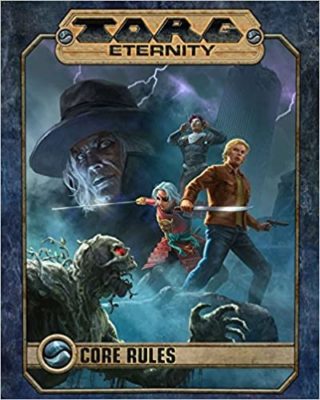
Find the TORG Eternity Core Rules here: https://amzn.to/3euhzCo
Hello and welcome to this, the first in a new series of reviews where I look at a new RPG system. I’m not sure it’ll be monthly as it takes a while to read through a new RPG, to understand its mechanics and to play it. But I will try. My name is Guy and we’re looking at Ulisses Spiel’s Torg Eternity Rules. But first – the disclaimer.
This review was sponsored by the publishers of Torg Eternity. I was only introduced to the system because they asked me to look at it. If they hadn’t, I wouldn’t have, and I am really glad that I did, because I think it’s a really wonderful system. It is the perfect “The Other Roleplaying Game” game. Details on where to find it at the end. Back to the video.
From the get-go something to know is this game was designed by the same man who’s done a ton of other RPGs out there from West End’s Star Wars stuff to TSR to Wizards of the Coast to Elder Scrolls online.
So what? Why do we care? Well – it means he’s been designing games for a long time and has been playing for a long time, so the mechanics included should be well thought out, and also looking to change the space in which we’re playing. That means this game has some serious thought put into it. Can’t go wrong there.
What is TORG Eternity? Short version: The earth – current day – is invaded by a bunch of high lords from different realities: Ancient Egypt, Dinosaurs, Techno Demons, future religious nuts – the usual suspects you’d inspect to invade the Earth. Why? Because they’re trying to suck as much power as possible from our Earth, to ascend and become the Torg. The supreme being.
This was the first break point for me. I hate premade settings. I really do. It boils down to me having to work more and read and remember and take someone else’s ideas and run them. It doesn’t work so well for me, I’m a slow reader, and I forget stuff. The first couple chapters of the book are devoted to the lore. Because I was paid to, I read it. Thank goodness I did. I was converted. The lore is really cool and the options it opens up for you as the GM are really something special. Why? The book sets up the ‘status’ quo – the world is invaded, and weird stuff starts to happen and the ‘invaders’ are drawn from well known tropes so that makes it accessible almost instantly. The PCs are typically humans like you and me, but their world is literally transforming around them. The rulers are unique and the goals of the PCs is instantly clear: This is a fight to save Earth.
Does that mean every campaign in Torg is going to be about saving the planet? Hell no. The second campaign I planned out, yes the second aside from the immidate one presented in the book, was – taking it to the High lords. These wretched villains invade Earth? Screw that, we’re invading back. The themes that are present in each of the realms, called cosms in the setting, are so varied that you can explore any one you like: Living savage, living in a police state, fighting Arthurian legends…
If I have time at the end of the video I’ll go into the different cosms as they’re a lot of fun. The thing is though, that as I read more I realized that the whole TRPG is about this setting. Ulisses Spiel is known for TRPGS that are made for the world they are set in. That was another major no for me. I like rules to be open so I can set anything I want in there. That, I think, is the power of Dungeons and Dragons: Sure some of the rules are linked to world settings, but in 20 plus years of running games in the D&D TRPG I’ve not once had a problem making my own worlds and settings.
So that is a major strike for me. I want to be able to use the rules in other scenarios and settings of my own creation. Then I read some more… and I’m a convert, again. And ironically, it’s because of the third thing I instantly hated about the game: The meta-content. Again, as by now you can expect, I was converted.
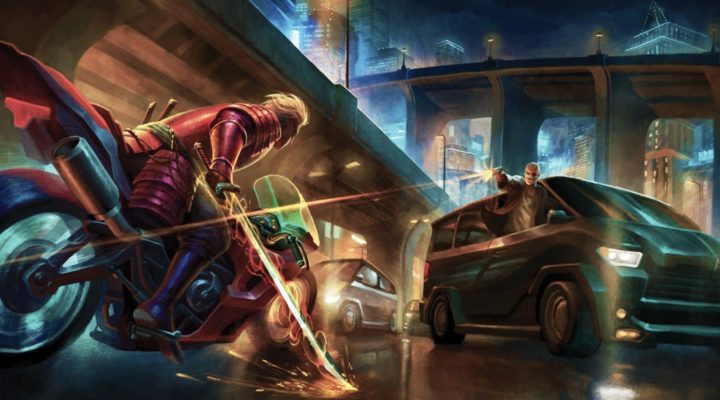
But back to the notion that the rules are locked to the setting. Why? And how? At first I was like: Sure they’re “locked”. I can unlock anything. I’m the GM. Well maybe not so much. Not to the level of integration this game has. And that’s a good thing. Something the designers focused on was working out how to handle people of different cosms, realities, dimensions, earth possibilities, interacting with each other. They didn’t want to hand wave and just say: It’s fine. Do it, there is no effect. They wanted there to be a reason why, when say, Medieval knights suddenly started roaming around, Earth soldiers and drone fighters didn’t instantly annihilate them.
Enter the beautiful mechanic of Axioms and Contradictions. Each Cosm has a value for its four axioms: Social, Spirit, Magic and Tech. Makes sense. So the cyberpapacy – a bunch of bigbrother religious French madmen – might have more spirit and tech than magic and social. The Earth itself has a set of axioms too and that is where our PCs start – the status quo if you will. When in another cosm, or when you attempt to do something above the axiom level of the cosm you cause a Contradiction. Basically, reality says: Wait – this is supposed to be reality X and you’re doing something from Reality Y – something has to change. And usually it’s the smaller of the two that change (the PC, the weapon etc.) so suddenly the action you are doing causes you to reconnect (literally reform) into something appropriate for that cosm. A fighter jet sails into the cosm of Mobius – a pharaoh from ancient Egypt set in a pulp action adventure theme reality. The jet causes all kinds of contradictions because the Tech Axiom of Mobius’s cosm is much lower than the Tech Axiom the fighter jet came from. In a Contradiction the jet fighter suddenly disconnects and is now a biplane made of wood and paper. Instantly the wings are ripped off because the jet was doing Mach 1, and the biplane isn’t designed for that.
Furthermore, the pilot inside may very well transform into a world war one fighter ace, or not. Either way chaos ensues. Now the disconnect is not permanent to certain humans – our hero characters, who can reconnect after some effort. It sounds insane but I love it. The players will typically have agency as to where they are going, and what they are taking with them, and this is a wonderful mechanic that makes sure if they don’t plan for or don’t figure out how best to operate in the cosm they are heading into, they’re going to discover that the cosms don’t like contradictions.
What this inspires in me as a GM is something like Star Gate, or Quantum Leap. This is the game for the GM who gets bored with just one setting. The rules support a wonderful game influencing and inspiring mix of game play. There are other more subtle rules about the effects of contradictions and the like, but we’re not going there just yet. I still have to address the meta game play.
By meta game play I mean a device or tool that is used by the player to influence the world of the character. Dice are a meta game tool that most TRPGs use. However, dice are used to determine random outcomes. Major meta game tools are things where you as a PC are thinking of the RPG as a tactical game rather than a roleplaying game. Miniatures on Maps are a tactical element. If you are a good tactician in real life, your PC will benefit unfairly over someone who has no clue about tactical combat. Tokens, trading cards, and combined player pools are another example. When you have to think about the influence of a mechanic as a group, you’re not playing your character, you’re playing the game. Is this good or bad? For a purest it might be bad. Some games the meta play works really well. For others the Meta play is more interesting that the TRPG. For other players however, the meta isn’t an issue and is just another tool in the TRPG space to have fun. I certainly know when a game has a meta tool – I end up gaming the meta tool choices of the players which makes it a game within a game about a game? Anyway, back to Torg…
Again I was going – what? They sent me poker chips with illustrations on them, and a deck of multiple cards. If it can’t be done on a piece of paper and with a pencil is it really a TRPG? Hell yes. Especially when you see how this plays out. I also have to say that once I got over myself and my ‘old school’ mentality I realized another game I’ve been playing recently involved using playing cards instead of dice. And I’m thoroughly loving that game so why the hell not? Let’s get into it. The PCs have a small chance to control the possible outcomes of the universe – literally called possibilities. I love the idea of manipulating the quantum fields of the universe to change the possibilities in the PCs favour.
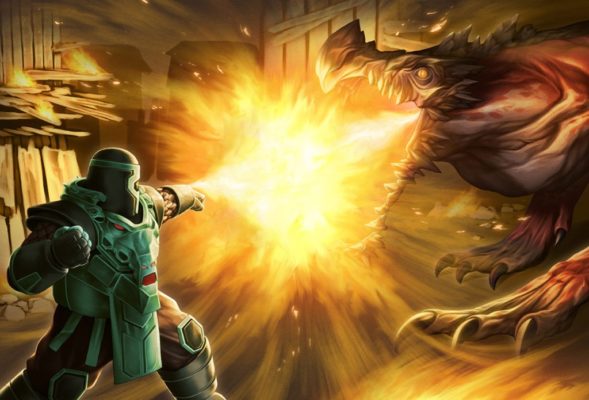
“I’ve seen 14 million possibilities…” Really? You had time to count them? And you remembered where you were in the count? I really am an old man… the idea of controlling the possible outcomes is super cool and the poker chips do that. PCs can cash in and change the possibilities in their favour. In game it’s a basic “Inspiration” point or hero point. So that could be dismissed as a tick-box on the paper. So said the grumpy old school me. Then you get to the next meta that cannot be pen-and-paper:
The Drama deck. This really does what it says. It causes a lot of drama. It causes all kinds of things to happen, like who acts first in a round, what skills are approved or not, and what advantages or disadvantages are in play for this combat. It swings both ways, with NPCs being affected – often in different ways to the PCs. This is a maelstrom of chaos. The GM has a planned encounter and suddenly Drama! The NPCs are now at disadvantage. That doesn’t even begin to take into account the players cards in their hand, known as their Destiny Cards. These are dealt at the beginning of each encounter and allow for some fun things to happen, typically in favor of the PCs. These can be traded between players too, so there is major meta happening there. As the GM I am just grinning from ear to ear at this prospect…
Here’s the scenario:
It’s a perilous situation, life of death. Hillary – your PC hangs by a single threaded rope from a burning zeppelin. You’re going to need a miracle to survive. Martin, your PC is equally in trouble. The flames are growing at a speed that seems unnatural as the mummy extends his hands using magic to grow them even larger. Hillary, Martin, what Destiny cards do you want to use. You may swap them at this time…however, Martin, if you don’t resolve the flames you’ll be consumed, and Hillary, if you don’t grab something else, the rope will snap. What do you do? And now as the GM you’ve set the cat amongst the pigeons: Does Hillary help save Martins character? Does Martin sacrifice himself? You could be truly mean and give them five seconds to choose… The cards here now act as a potential life-saver, but also as an additional choice component.
Well there’s another component that we can use: Cosm Cards. These are cards that are locked to the cosm the PCs are in. They are a mixed bag of: Destroy all your gear and gain three possibilities – three chips – which might save you… or not. We have these layers which give the PCs options. It gives the players options that allow for extraordinary outcomes.
Whenever I, as the GM, can cause my players to have to make a decision, it’s a great moment. The more choices the PCs have to make (and by make I mean – choose now), the more engaging the game. This is why once I sat back, I said: OK. This meta makes sense, especially for the theme of the setting, and the rules that support that setting.
Find the TORG Eternity Core Rules here: https://amzn.to/3euhzCo
So far TORG 3, me 0. Engaging setting, engaging rules, engaging meta. What about the basics? The usual stuff? How does that play out? Well, here I win, or lose. I’m not sure anymore. Combat is exactly what you’d expect from a d20 based system. Roll the die and add some modifiers… except it isn’t. And that’s because of an exploding mechanic that says if you roll a 10 or a 20, you reroll and add the next result to your 10 or 20. If you hit another of those two, you roll again, and so on, allowing for a single roll to get as high as 200 before the GM confiscates the loaded d20. Technically you could roll 400 natural 20’s in a row…
Back to the idea of these big rolls. To handle the die roll equaling anything from 1 to 40+ the designers introduced the idea of a reference table. You compare what your roll total was to the chart – which has ranges across the spectrum. This will give you actual value and that number is added to your skill modifier to give you your total.
It’s also not one of those tables you can just learn, as the dynamic changes up and down the scale. I’m not a fan of adding in an extra layer of cross-referencing, especially during combat. We’re always comparing true, but now the Player is rolling, adding, then looking at the chart, then adding. It isn’t game-breaking for me. As the GM I’ll cheat and just roll the d20 and choose the number I want instead of referencing. I did that for Thaco 15 years ago and never looked back.
That for me is another major component that I look for in rules sets, regardless of how much setting they come with, or don’t: How can I make it my own. The setting, the cards, the meta, those are specific and so I could add, but taking away would be a major pain. The reference table makes sense to the game designers, and to the millions of people who play the game, I’m just bad at math, or lazy. Or both.
OK, back to the basics. They do have a cool system for remaining conscious, so it is possible to knock out your target rather than kill your target. Damage though is not straightforward. There is a difference calculation and a damage effect that correlates to that outcome. I do like the chapter entry on Character death however: It reads:
Character Death. If a character dies, it’s generally appropriate for her companions to say a few kind words, sing her praises or tell a story of some epic – or humorous – deed.
No resurrection here. Say some words and move on folks, you dead.
As vehicles feature in a modern setting, I was eager to look at the rules they have for them. Along with called shots – shots where you specifically aim for a part of the target that might be harder to hit, but is more vulnerable – you can call-shot a vehicle, targeting the engine, tires and the like. Again – I’m going to read from the book:
Quinn rams his jeep into a T-Rex. He gets an outstanding result on his land vehicles roll against the dinosaur’s average dodge roll. He causes the Jeep’s toughness value plus two bonus dice in damage. The jeep takes 20 points of damage (equal to the Rexes toughness), but has airbags so Quinn takes 16 damage. Now depending on those bonus dice, the T-Rex might take 2 or 3 wounds and shock – not bad considering it can only sustain 4 wounds.
I have to say that the reference tables would need to be printed out and included for ALL PCs and the GM to make the game move as quickly as possible. I’m going to say this is a TORG 3, ME 1.
What is it like for the players? They will love this game. The Gear chapter is massive. Included in this are things like… a Boeing 747 (a steal at 5 million), A Zeppelin (only 800k), A Fey Galleon (10 mill – come on, it’s magical totes worth it!), all the way to A Luxury Ocean Liner, a Viking Longship, or perhaps you’d prefer a Coal steamer? Because the game spans multiple cosms that represent the different possibilities of the universe there are items from across the spectrum. And each of course, has an axiom value so that when the PCs forget their luxury yacht is from the 21st century and they sail into the Nile delta, they have no reason to cry when their million dollar boat turns into a reed-based Dow because of a contradiction in reality. Damn I love those things…

Character builds are what you’d expect and there are many choices for your character. The game isn’t shy about it. Races are limited but it is thematically appropriate to the setting so it doesn’t feel odd. You have some base attributes and then a long list of skills to choose from. Perks – cosm linked – round out your character. Neatly and easily done.
Magic is a thing, and in some cosms a very powerful thing. In others, it might cause a contradiction and fail, or transform the wizard into a stage magician with a white rabbit and no memory of actual magic. Magic – being one of the axioms – is tied to the cosms and must be used carefully. Spells are fairly straightforward and require the caster to beat a difficulty number to be cast. There is also divine magic in the form of Faith – and it works in the same way. As it is linked to the Spirit Axiom it can cause problems… mwahahahaha! Be careful PCs, building a powerful mage might work in some cosms, but in others… Finally, on the superpower front, they have Psionics. Working in the same way as magic and miracles, psionics seems like a really good fit given the diverse nature of this game setting. The fact that it all works seamlessly from the get-go makes it even more appealing to me as the GM or as a player. TORG 4, ME 1
Speaking of that: The entire book is really well laid out. I didn’t have much trouble navigating through it’s chapters, and the entries are clear and logically presented. PC character creation was simple and did not have me scratching my head, unlike some other TRPGs. The book quality is superb, and the imagery is evocative of the setting and the style of the game. It even has two place holder ribbons – book marks – one blue and one red. What a brilliant add to the book.
What I really like about the book – and the TRPG – is that has a section dedicated to the GM, and details things like adventure options for the different cosms, gives advice on how to structure missions or adventures so they feel thematically appropriate to the cosm. It also includes an extensive section on adventure structure – acts and scenes – something very near and dear to my heart and this channel. The fact the book goes on to talk about how NPCs can be used, as motivators, exposition givers, mood setters and so on really resonates with a complete TRPG package helping new GMs learn how to give a better world to their PCs.
Rounding out the Core book are Monster stats. Clearly presented and covering all cosms, there is something in there for everyone, including how to make your own. This is what you’d expect from a Core book. TORG 5 ME 1.
Now they also sent me The Delphi missions, a 12-adventure one-shot or drop in and play book. It has the same wonderful book mark ribbon as in the core book – which I love, and some really fun side missions. There is a dry sense of humour throughout most of the adventures, and each one plays out in a different cosm which is nice. The adventures are well laid out and well planned. If this is the quality of all of their supplements, that is a great reason to get into this game if you like that kind of inspiration. I did like the fact that it added more to the monster database and extended the universe a little more.
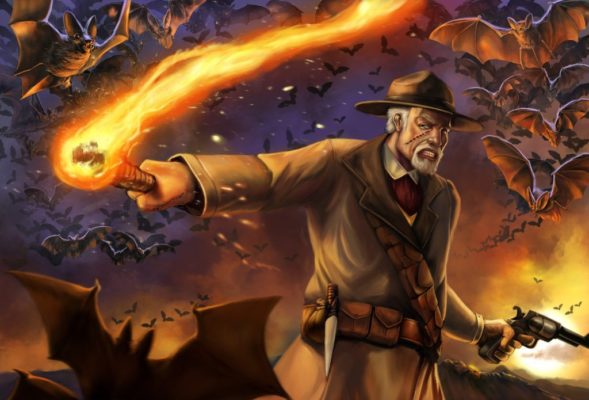
What does this all boil down to then? TORG Eternity is a slightly complex – the reference tables – but easily accessible rule system. Don’t be put off by the meta-game stuff, it makes it a real treat to GM as you have to adjust to the extra game twists, but I think that makes it a lot of fun to play honestly, as you’re juggling the plot, triggers, and now the added component of destiny and possibilities.
I’ve run this for a few of my friends – and no the videos are not available, unless you really want to see them. Sometimes it is nice to play without the camera rolling. I believe this game has legs. There is huge scope for adventures and missions, and as long as you’re not cosm hopping every twenty minutes, your players will be able to stroll down the streets of 1920’s Cairo, hop on a boat and a few hours later be in a Paris from the near future without contradictions turning their insides out.
The biggest barrier to entry for me – the lore – is presented so well in the book that I truly cannot see how it could be a real barrier. The best way to get into the game as far as I’m concerned, is pick up a copy, get some destiny decks and start playing in a single cosm. Get used to the very straight forward mechanics – especially if you’re used to d20 game play – then shift into one of the many possible cosms. See how it feels and how it affects the PCs and their gear. After a while shifting cosms should be easy. The lore – as I said – is presented across the book, and you can take as much or as little as you need getting into it over time. Unlike a completely fantastical setting, all the realities are in the common space – just by having watched television or film you’ll get the basics quickly.
What I really love is they talk – in the book – about the cosms all being thematically different. Some are more mystery and discovery, others are pulpy action. Some are straight up big brother states with politics and intrigue around every corner. And then others are techno-demons and undead Viking warriors and it’s just hack and slash. Whatever you and your PCs are looking for, this other role playing game option (it’s an inhouse joke, buy the book to learn about it, or work it out for yourself, I have said it twice in this video) is a great TRPG to add to your collection.
I’ll be doing a few more videos for Torg Eternity and I’d love to know what you’re more interested in, so give me a heads up: Do you want more about the world setting and lore? Perhaps it’s about explaining the critical rules? Or understanding how to make adventures within Torg? Let me know in the comments down below, I’d love to hear from you.
If you’ve played TORG that is even better – let me know what you think about the game. Had a good time? Let us know about it.
That’s it from me for this Torg Eternity Special. I’ll be back next week with the next in the Torg series – decided upon – by you!
Find the TORG Eternity Core Rules here: https://amzn.to/3euhzCo
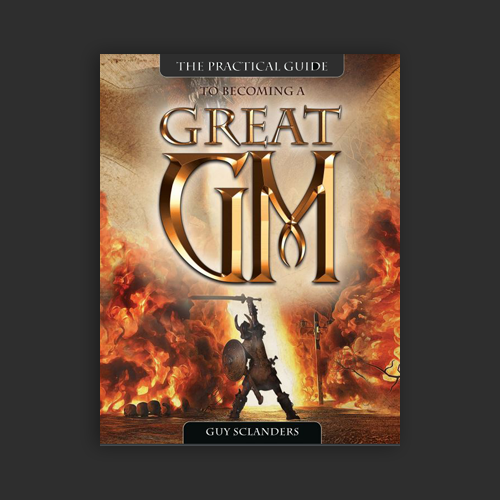

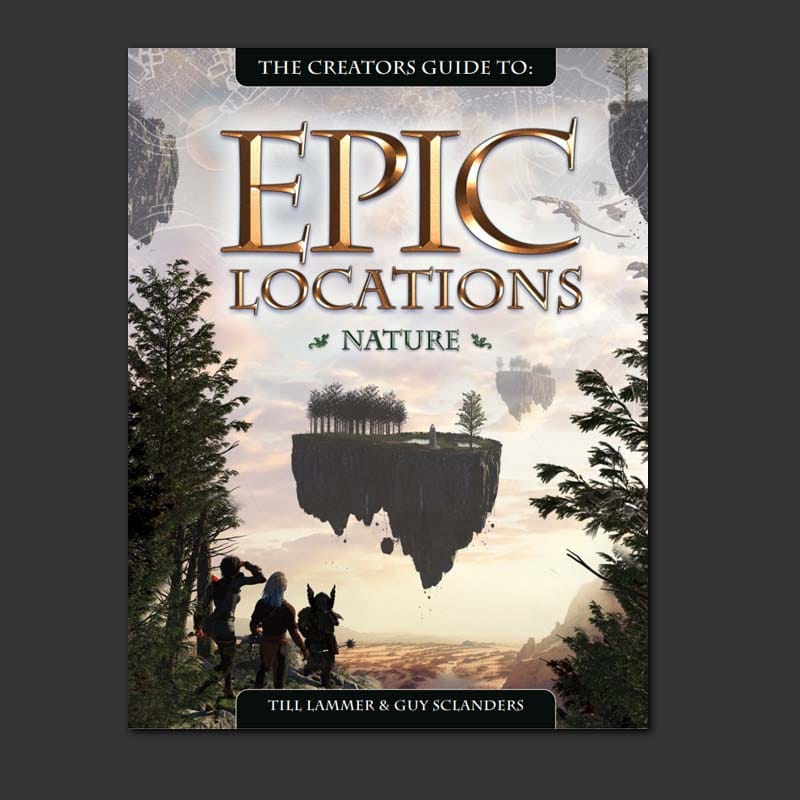
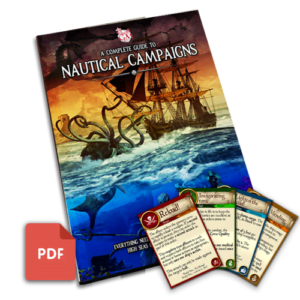
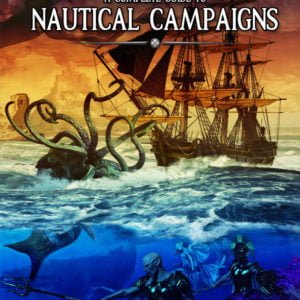








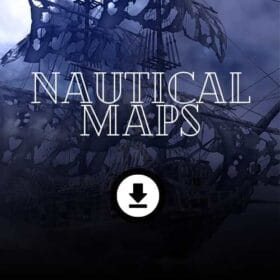
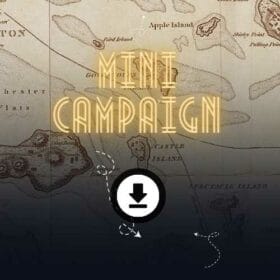
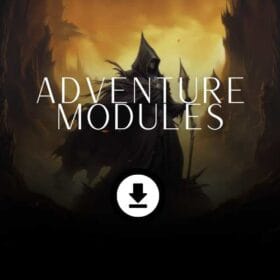
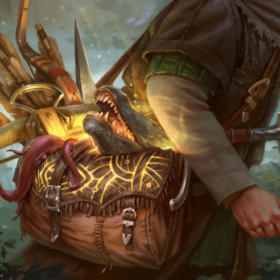
Stumbled across this, and I thought it was a well done and comprehensive review. but as a long time fan of the system (I’m no Kansas Jim, but I’ve been around long enough to know who Kansas Jim was) I felt I could chime in as regards to the original.
So the short version is Torg Eternity (TE) really feels like a “two-steps forward, one step back” kind of edition. Mechanically it’s pretty much superior in every way, where it either comes up with fresh new improvements to the system (Perks being the greatest) or jettisons more complex and engaging mechanics for simplicity’s sake (Magic no longer has an Ars Magica style system, Faith no longer has a division between followers and the person focusing the faith, there’s no specialized mechanics for gear and programs while in the Godnet, etc.). While I don’t like all the changes, generally speaking I respect them and admit they do what they’re trying to do. Put another way, (almost) every main cosm used to come with its own “mini-game” element, and those have all been excised in TE, and it guts some of the flavor of each cosm, but also makes things flow so much easier.
The only mechanical issues where I really feel TE drops the ball are in regards to the Torg Value Chart and the Drama Deck. The original TVC was a magical mathematical spark of genius. Want to convert metric measurements to Imperial? It had formulas for that. Want to know how strong your Pulp strongman was, or how fast that Aysle spell let you run? No problem. It wasn’t exact, but it was good enough, and TE doesn’t stress how versatile and useful a tool the TVC could be. The Drama Deck meanwhile… basically the original did (almost) everything the new deck does, but with fewer cards, by simply cutting out the art. The one thing the new Drama Deck does better is custom tailor different setting elements for each realm/cosm on a Deck-by-Deck basis. Although I suspect that has as much to do with monetization as anything. “Hey kids! Want to adventure in Tharkhold? Here’s a Tharkhold booster deck, with neat art so you have something better to look at than boring old mechanics! Because we heard all the people who used to complain about the Deck, and we thought art would make it better!” And dang if it doesn’t seem to have worked for a lot of folk I guess.
Where TE really dropped the ball though was in updating the setting. Or rather, in bringing back the stuff that made the original setting come alive. Quick question: the edeinos of the Living Land are empowered by their faith. What do they believe in? Fans of the original setting can answer this (hint: edeinos are kinda masochistic), but folks who just have the new Living Land book are in the dark. Yeah, we have a stat block for Lanala now, but… why? “If you stat it, expect players to kill it” doesn’t seem like a good idea for a setting where faith is more powerful than physics. And then there’s Baruk Kaah’s suicidal fire-wielding edeinos, and so on. And every realm has -something- that the original series either covered better, or that TE doesn’t mention at all. Aysle’s Dark/Light world divide, the implications that the Godnet connected to -real- Heaven(s) and Hell(s), Tharkholdu reproduction rituals (and yes, as basically asexual creatures driven by sadomasochistic Master-Slave relations, they need help to reproduce), and so on. Can you play TE without all that original background material? Sure. But I feel someone who only knows TE is missing out on a lot of stuff.
And that’s where TE is for me: I don’t see myself ever running original Torg again, and I genuinely like TE, but for TE to really work for me I have to end up using the stuff from each setting I like to make a working whole.
I’m coming to this a few months later, but… I can’t agree. TE has in most ways _significantly_ improved the setting from the original Torg. For every one of the omissions you cite, there are a half a dozen ways in which the new edition is better or filled in a glaring gap in the original.
In particular, it’s much, much better at the thing the original Torg most dropped the ball on – feeling global in scale and theme, not just based-entirely-on-American-worldviews. It’s also much better at creating the sense the High Lords have a history, with past invasions mattering from the start.
The shallow stereotypes of Kanawa, of much of Aysle, of Tharkold have been replaced by actual worldbuilding and thought about how Earth governments might react to the invasion. The bog-standard 90s tropes have been replaced by integrated depth – I’ll happily trade off the unexplored and frankly not-interesting implication that the GodNet connects to real heavens and hells, when it’s been replaced by a critical examination of privacy-free techno-surveillance society married to a note on the way virtual worlds let us ignore the problems with our actual ones, both done in ways that are endlessly useful for storytelling.
You miss the Tharkold reproduction ritual? I’m glad to lose it, if instead I get the far-more-relevant Vril production scenes material, the more interesting version of Tharkold’s history, and that final scene of Kranod and Jezrael – a far more terribly twisted sadomasochistic horror than anything the original hellraiser-knockoff version of Tharkold could manage, deeply rooted in character. All of those can add depth to my game and my presentation of Tharkold, in a way the original didn’t.
I’m not getting rid of my original sourcebooks any time soon – there are still a few ideas worth looting for my campaigns. But it’s far, far fewer than I thought it would be.
Played TORG for a while and loved it so much that I would really rather play/run it than any other game. I disregarded the drama deck (original only had one deck) in favour of a simple initiative roll. I would like to see what you have found of the differences from TORG to TORG Eternity, good and bad.
I’m coming to this a few months later, but… I can’t agree. TE has in most ways _significantly_ improved the setting from the original Torg. For every one of the omissions you cite, there are a half a dozen ways in which the new edition is better or filled in a glaring gap in the original.
In particular, it’s much, much better at the thing the original Torg most dropped the ball on – feeling global in scale and theme, not just based-entirely-on-American-worldviews. It’s also much better at creating the sense the High Lords have a history, with past invasions mattering from the start.
The shallow stereotypes of Kanawa, of much of Aysle, of Tharkold have been replaced by actual worldbuilding and thought about how Earth governments might react to the invasion. The bog-standard 90s tropes have been replaced by integrated depth – I’ll happily trade off the unexplored and frankly not-interesting implication that the GodNet connects to real heavens and hells, when it’s been replaced by a critical examination of privacy-free techno-surveillance society married to a note on the way virtual worlds let us ignore the problems with our actual ones, both done in ways that are endlessly useful for storytelling.
You miss the Tharkold reproduction ritual? I’m glad to lose it, if instead I get the far-more-relevant Vril production scenes material, the more interesting version of Tharkold’s history, and that final scene of Kranod and Jezrael – a far more terribly twisted sadomasochistic horror than anything the original hellraiser-knockoff version of Tharkold could manage, deeply rooted in character. All of those can add depth to my game and my presentation of Tharkold, in a way the original didn’t.
I’m not getting rid of my original sourcebooks any time soon – there are still a few ideas worth looting for my campaigns. But it’s far, far fewer than I thought it would be.